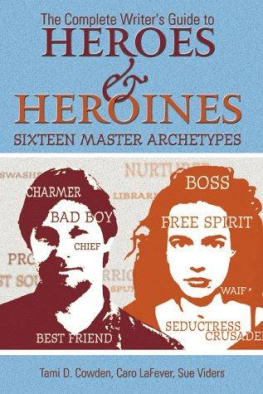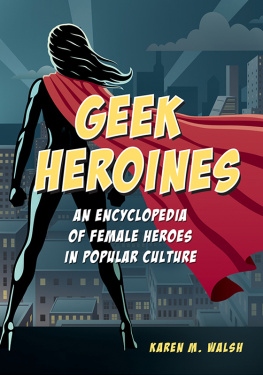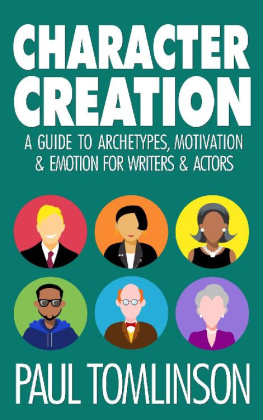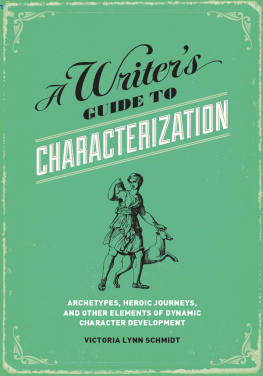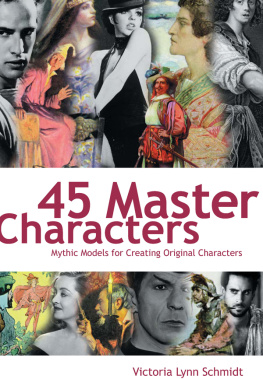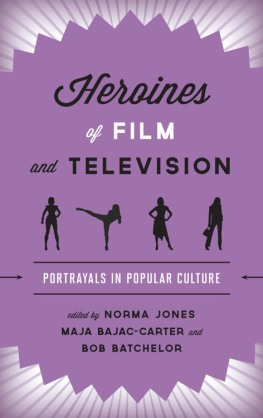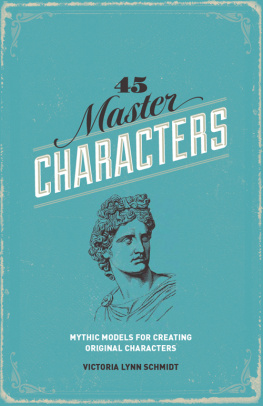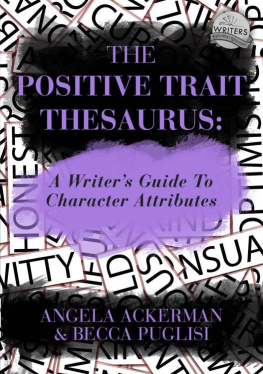This book made available by the Internet Archive.
The Complete Writer's jGuide to Heroes and Heroines SECTION III
USING THE ARCHETYPES
TO CREATE CHARACTERS 97
CORE ARCHETYPES 100
EVOLVING ARCHETYPES 104
Male Example of an Evolving Archetype 109
Female Example of an Evolving Archetype Ill
LAYERED ARCHETYPES 113
Male Example of a Layered Archetype 118
Female Example of a Layered Archetype 120
P^MEMBER 122
SECTION IV
ARCHETYPE INTERACTIONS 123
PAIRS
The BEST FRIEND and the LOST SOUL 126
The SPUNKY KID and the NURTURER 127
The WARRIOR and the CHARMER 128
The CRUSADER and the WAIF 128
The PROFESSOR and the SWASHBUCKLER 129
The BOSS and the SEDUCTP^SS 130
The CHIEF and the BAD BOY 131
The FREE SPIRIT and the LIBRARIAN 132
The CHIEF and the
BOSS 133
SEDUCTRESS 133
SPUNKY KID 134
FREE SPIRIT 135
WAIF .....136
LIBPJVRIAN 136
CRUSADER 137
NURTUP^R 138
The BAD BOY and the
BOSS 138
SEDUCTPJ^SS 139
SPUNKY KID 140
FREE SPIRIT 141
WAIF 141
LIBRARIAN 142
CRUSADER 143
NURTURER 144
Contents
The BEST FRIEND and the
BOSS 144
SEDUCTRESS 145
SPUNKY KID 146
FREE SPIRIT 147
WAIF 147
LIBRARIAN 148
CRUSADER 149
NURTURER 150
The CHAl^MER and the
BOSS 150
SEDUCTPJESS ; 151
SPUNKY KID 152
FREE SPIRIT ^ 152
WAIF 153
LIBRARIAN 154
CRUSADER 155
NURTURER 155
The LOST SOUL and the
BOSS 156
SEDUCTRESS 157
SPUNKY KID 158
FREE SPIRIT 158
WAIF 159
LIBRARIAN 160
CRUSADER 160
NURTURER 161
The PROFESSOR and the
BOSS 162
SEDUCTRESS 163
SPUNKY KID 163
FREE SPIRIT 164
WAIF 165
LIBPJ^RIAN 166
CRUSADER 166
NURTUP^R ^ 167
The SWASHBUCKLER and the
BOSS 168
SEDUCTRESS 168
SPUNKY KID 169
FREE SPIRIT 170
^ WAIF 171
LIBRARIAN 171
CRUSADER 172
NURTURER 173
The Complete Writer's ^Guide to Heroes and Heroines
The WARRIOR and the
BOSS 174
SEDUCTRESS 174
SPUNKY KID 175
FREE SPIRIT 176
WAIF 177
LIBPJVRIAN 177
CRUSADER 178
NURTURER 179
ENSEMBLES
FIRST WIVES CLUB 180
GHOSTBUSTERS 180
WAITING TO EXHALE 181
THE DIRTY DOZEN 182
LITTLE WOMEN 183
SAVING PRIVATE RYAN 184
STEEL MAGNOLIAS 185
ARMAGEDDON 186
GILLIGAN'S ISLAND 187
L.A. CONFIDENTIAL 187
THE BIG CHILL 188
STAR TREK: VOYAGER 189
FINAL THOUGHTS 191
APPENDIX
FILMS 193
TELEVISION PROGPJVMS 198
LITERATURE BY TITLE 199
LITEPJVTURE BY AUTHOR 200
ACKNOWLEDGMENTS
To Steve, my favorite husband and personal hero, for Alex and Kate, my favorite daughters, who are growing up to be bright, beautiful young heroines, and for Martin, as fine a son as one could want.
Tami Cowden
To Dan, who spent endless hours at breakfast discussing characters, who rarely griped about watching classic black and white movies instead o( Rambo or kickboxing, and who believes in my writing more than I do.
Caro LaFever
To Jack, my long suffering hero and best friend, who listened to all my harebrained ideas, helped me with finding the right words and took me out to many dinners after long days at the computer.
Sue Viders
The authors gratefully acknowledge the insight, support, contribution, advice and comments of Brenda Beagley, Sally Prince Davis, Karin Story Dearborn, Patti DeGroot, Carolyn Greene, Su Kopil, Betsy Norman, Roger Reid, Nancy Warren and our many friends on the RWA, BIAW and HODRW Hst-serves. We appreciate all you have done for us.
https://archive.org/details/completewritersgOOcowd
NOTES FROM THE EDITOR
If
is a book about Hero and Heroine Archetypes important to screenwriters? Because creating believable characterizations that connect with the audience is probably one of the most difficult aspects of writing an author faces. The weakest component of many screenplays and novelsnot to mention numerous produced films and television showsis characterization, especially in the inner life of individual. Why is this so? The creation of rich characterizations defies easy codification, making it very hard to understand, let alone teach. Sometimes an author creates a great character, other times characters just fall flat. When a book comes along that provides new insight into understanding characters and how they function, all writers should take notice.
In The Complete Writer's Guide to Heroes & Heroines, authors Tami D. Cowden, Caro LaFever and Sue Viders offer not a reductive theory on how to create complex characters, but a broad analysis of the basic male and female archetypes populating the vast field of literature and filni. Through the use of numerous examples from films and books, they show how the archetypes operate beneath the faces of the most original characters to forge a link with the audience based in shared human experiences.
Writers and screenwriters alike will find this book an invaluable tool to understanding their characters at deeper levels. All good writers have to be psychologists who must understand their characters' actions and motivations. Through the description of
The Complete Writer's .Guide to Heroes and Heroines
i the sixteen archetypes, authors Cowden, LaFever and Viders
j provide ample material to help writers know their creations,
i They present a cohesive method for organizing biographical
i information to aid the writer m clearly seeing a character in
i conflict, which is e3sential to the plot of every story. They show
i how the identification of the archetype at work in a character
! sheds Hght on the meaning of his inner conflict and the direc
i tion of his solution. They illustrate the advantage of combining
i archetypes to create more complex characters. In their discus
i sion of the antagonism inherent in archetypal relationships
i between the opposite sexes, pairs and ensembles, they offer pat
1 terns of growth and reconciHation. All of these serve to broad
! en and deepen characters' dimension, which can only make for
i more authentic, more believable characters.
j Linda J. Cowgill is a produced screenwriter who has also writ
i ten for prime-time television. She has taught screenwriting
i seminars for the American Film Institute at the Kennedy Center
i in Washington, D.C., and at the Boston Film Institute,
j Currently, she teaches screenwriting at Loyola Marymount
i University. Ms. Cowgill is the author of the popular film school
\ textbooks Writing Short Films and Secrets of Screenplay Structure.
INTRODUCTION
Stories have been told since the dawn of language. The focus of these tales has always been the people who inhabited them; events were recounted only as a backdrop to the exploits of the heroes and heroines. From the earliest days, storytellers have known a simple truth: strong characters may carry a weak plot, but weak characters cannot be hidden by a strong plot.


